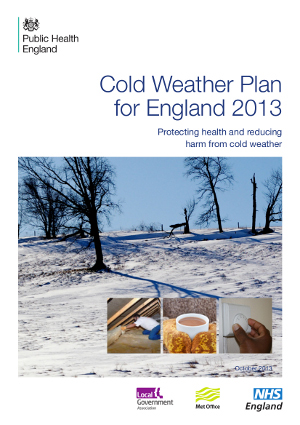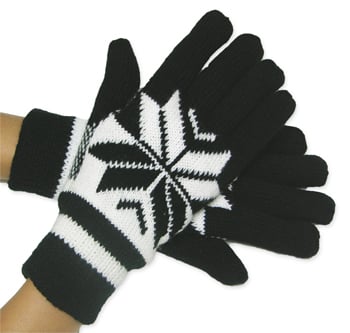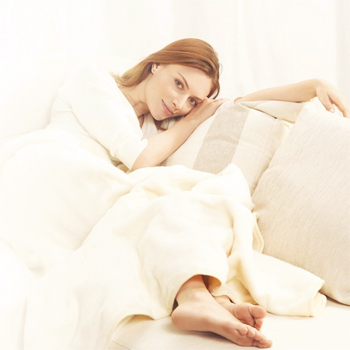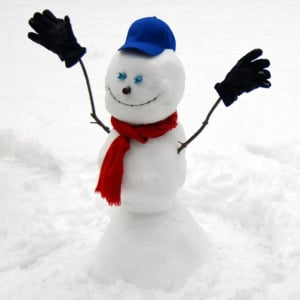The Cold Weather Plan 2013 - Keep Safe This Winter
Last week the government released its 2013 Cold Weather Plan to advise people across the country about staying warm and safe this winter. It is estimated that around 24,000 avoidable deaths occur each winter as a result of lower temperatures, inefficient housing, fuel poverty and infectious illnesses. With some simple precautions you can protect yourself and those around you who are most vulnerable.
Saving money during winter
Fuel bills are at an all-time high, and we can often feel powerless against the energy companies who continue to hike prices year on year. Although it’s tempting to keep the heating turned off for as long as possible, if you remain in low temperatures for long periods of time you put yourself at an increased risk of pneumonia, stroke and heart attack. People over 65 or with pre-existing medical conditions are at higher risk. Stay warm and safe, and save money with these tips: Heat just your living room (or the room you spend most time in) rather than your entire house. Heat bedrooms at night only until you go to bed. You can then set the timer on your heating to come on again in the morning to heat the room just before you wake up. Keep doors between rooms closed to help maintain temperatures. Follow government guidelines for optimum temperature levels throughout your home. Any higher than these temperatures and you could be wasting energy:
- Living room 21˚C
- Bedroom 18˚C
- Rest of the home 16˚C
If you’re still feeling the chill when your home is heated to these temperatures, put on some extra layers or use flexible heating devices such as electric blankets or heat pads which are inexpensive to run. Draw your curtains when it gets dark as this acts as extra insulation to prevent heat from escaping via windows. Ensure doors and windows are properly sealed to prevent draughts and loss of heat. Make sure radiators are not obstructed by curtains or furniture which can prevent the heat they give out from circulating around the room. If you haven’t done so already, insulate your home. Loft insulation prevents 25% of your home’s energy from escaping, and cavity wall insulation prevents 35% of your energy escaping, so both processes are worth investing in. There are government schemes available which offer financial help for home insulation; visit www.gov.uk to find out what you could be eligible for. Insulate your hot water tank and pipes to help maintain the temperature of your water.
Wrapping up against winter weather
It goes without saying that you have to wrap up in cold weather, but here are a few tips to help you keep warm and comfortable even on those snowy days.  Wear lots of thin layers of clothing, as it is the air in between layers that traps heat and keeps you nice and warm. Make sure to wear thick, warm gloves to protect your hands from the cold; our Sherpa lined gloves are brilliant for this, and they feel soft and cosy against your skin too. If you suffer from swollen, achy joints as a result of arthritis you may find the cold weather makes the pain worse. Try wearing support garments beneath your clothes to compress the joints and prevent inflammation and pain. We have a range of arthritis gloves and a collection of supports for knees, elbows, wrists and the back. Invest in a hardwearing pair of shoes that provide warmth and have good grip on the soles to help you stay on your feet during snowy and icy weather when footpaths can become slippery. Try heat reflecting insoles to keep your feet warm. With a thin layer of aluminium on top, they reflect heat upwards to prevent it from dissipating through the sole of the shoe, keeping your feet lovely and warm.
Wear lots of thin layers of clothing, as it is the air in between layers that traps heat and keeps you nice and warm. Make sure to wear thick, warm gloves to protect your hands from the cold; our Sherpa lined gloves are brilliant for this, and they feel soft and cosy against your skin too. If you suffer from swollen, achy joints as a result of arthritis you may find the cold weather makes the pain worse. Try wearing support garments beneath your clothes to compress the joints and prevent inflammation and pain. We have a range of arthritis gloves and a collection of supports for knees, elbows, wrists and the back. Invest in a hardwearing pair of shoes that provide warmth and have good grip on the soles to help you stay on your feet during snowy and icy weather when footpaths can become slippery. Try heat reflecting insoles to keep your feet warm. With a thin layer of aluminium on top, they reflect heat upwards to prevent it from dissipating through the sole of the shoe, keeping your feet lovely and warm.
Using flexible heating devices during winter
Flexible heating devices such as heat pads, electric blankets and foot warmers are inexpensive ways to stay warm and cosy at home without hiking the heating up full blast and wasting energy. Here are our tips: Safety is key with any electric blanket or heat pad; choose something with heat sensors and automatic switch-off to prevent overheating. All our Beurer devices have their patented Beurer Safety System to keep you safe. Footwarmers are brilliant if you’re prone to chilly feet. You’ll find fabric ones which surround both feet, or ‘hot plates’ which are flat, metal heaters to rest your feet on. You may prefer non-electric heat pads such as the Herbal Comfort Wrap, which emits a soothing lavender scent when you heat it in the microwave. If you suffer from arthritis or rheumatism in specific areas, choose a heat pad that is suitable to apply heat to that area in order to soothe pain whilst keeping you warm. For example the Beurer HK58 is perfect for the neck and back, whilst the Beurer HK54 is good for shoulder pain. Do not use an electric heating device and a hot water bottle together – there’s always a risk that the water bottle could leak, and water and electricity do not mix! Heat pads provide less intense heat than hot water bottles and you have better control over the temperature too. This is ideal for people with diabetes who are prone to feeling cold in their limbs as a result of nerve damage caused by the disease; it may be tempting to apply intense heat in order to feel some warmth, but with damaged nerves you may not be able to tell if the temperature is too hot and doing damage to the skin. Use gentle heat from an electric heat pad instead.
Do not use an electric heating device and a hot water bottle together – there’s always a risk that the water bottle could leak, and water and electricity do not mix! Heat pads provide less intense heat than hot water bottles and you have better control over the temperature too. This is ideal for people with diabetes who are prone to feeling cold in their limbs as a result of nerve damage caused by the disease; it may be tempting to apply intense heat in order to feel some warmth, but with damaged nerves you may not be able to tell if the temperature is too hot and doing damage to the skin. Use gentle heat from an electric heat pad instead.
Keeping your home safe during winter
Have your heating system checked regularly to prevent faults which could lead to fires or carbon monoxide poisoning. Fit an audible carbon monoxide alarm; carbon monoxide is a deadly invisible and odour-free gas, so an alarm is the only way for you to know if it’s present in your home. If you tend to have coal or log fire ensure your home is properly ventilated. Have your chimney swept on a regular basis to prevent it from blocking and don’t leave flammable items, such as clothing, too close to an open fire.
Keeping your body healthy during winter
Stay active; we keep warm when we’re on the move, so try to move around at least once every hour. Fight your cravings for carbs and sugar during cold weather; both of these work to temporarily boost our energy and heat levels but they do not give us long-lasting energy and can make us feel sluggish and tired soon afterwards. Plus, they can make us pile on the extra pounds. Eat lots of fresh fruit and vegetables to ensure your body is rich in vitamins to protect you from the cold and flu viruses which become rife in the winter months. Have plenty of warm food and drinks to keep your body temperature high. Although it’s tempting to drink lots of tea and coffee, remember that too much caffeine can give you headaches, dizziness and heart palpitations; try decaf tea and coffee, hot chocolate or squash with hot water instead. Take Vitamin C & D supplements. We usually get Vitamin D from the sun so we’re at risk of becoming deficient during darker winter months. Vitamin C is essential for a healthy immune system to protect you from winter viruses, so there’s no harm in topping up on natural levels with a supplement.
It’s not all doom and gloom during winter!
 Yes it’s cold, dull and often drizzly, but if you’re feeling a little glum about winter just remember the great things about it; hot chocolate with marshmallows, those lovely crisp and sunny frosty mornings, the giddy and glittering build-up to Christmas and the New Year celebrations!
Yes it’s cold, dull and often drizzly, but if you’re feeling a little glum about winter just remember the great things about it; hot chocolate with marshmallows, those lovely crisp and sunny frosty mornings, the giddy and glittering build-up to Christmas and the New Year celebrations!

